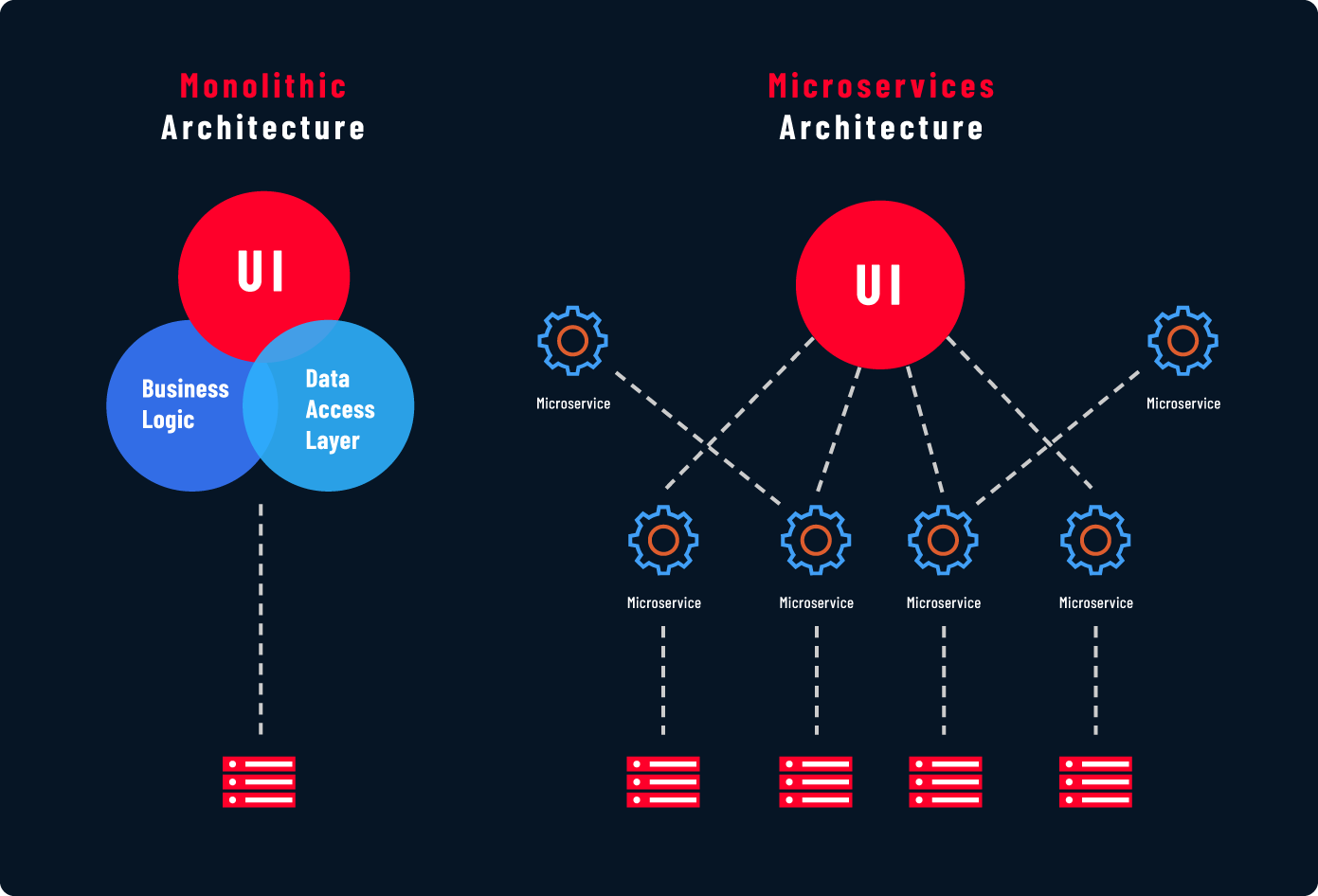Leveraging Microservices and Serverless Architectures on AWS
Samuel Lincoln - July 27, 2025

Microservices architecture is an approach where an application is decomposed into a set of smaller, independent services, each responsible for a specific business capability. Instead of having a single, monolithic codebase and shared database, each microservice maintains its own code, database and lifecycle, which improves scalability and maintainability. In practice, applying this architecture means splitting the system along business domains to create loosely coupled services. Communication between them can happen through REST APIs — typically managed by an API Gateway — or via messaging systems such as Amazon SNS or SQS, which help to decouple services and add resilience to the overall architecture. This model also enables teams to work on different services independently, deploy them separately and scale only the parts of the system that actually need more capacity.
Serverless architecture
"Serverless" is a cloud computing model where you write and deploy functions that run in response to events, without provisioning or managing servers directly. In this architecture, the cloud provider automatically handles scaling, availability and infrastructure maintenance. On AWS, serverless is most commonly implemented with services like AWS Lambda, which execute code on-demand when triggered by events such as API requests, file uploads or message queues. A practical way to use serverless alongside microservices is to run core services in containers, while offloading asynchronous or event-driven tasks — like background data processing or notifications — to serverless functions. This approach combines the flexibility and fine-grained scaling of serverless with the structure and control offered by containerized microservices.
Observability and Performance Monitoring
To ensure continuous monitoring and quickly detect issues, it’s important to implement centralized logging and observability across all services. In AWS, this can be done using CloudWatch to collect and aggregate logs, along with tools like Grafana to visualize key metrics in real time. Additionally, using AWS X-Ray to collect distributed traces helps identify performance bottlenecks and understand how requests flow through different microservices and serverless components. This end-to-end visibility is critical for maintaining reliability and optimizing the system over time.
Conclusion
This design keeps each service independent and highly scalable, enabling the system to handle changes in demand with elasticity. By combining microservices and serverless components, and implementing centralized logging and tracing, the architecture maintains strong observability and resilience — ensuring the application remains robust, maintainable and ready to adapt to future business needs.